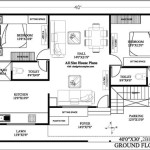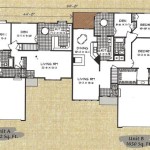Essential Aspects of Victorian House Renovation Floor Plans
Renovating a Victorian house is a challenging yet rewarding endeavor. Crafting a well-thought-out floor plan is crucial to optimize space, preserve historical charm, and create a comfortable living environment. Here are some essential aspects to consider when planning a Victorian house renovation floor plan:
1. Historical Context and Character
Victorian houses are renowned for their intricate architectural details, such as ornate moldings, decorative fireplaces, and bay windows. It's essential to preserve these elements during renovation to maintain the historical character of the home. Consult with experts to determine which features should be preserved and how to incorporate them into the new floor plan.
2. Structural Integrity
Victorian houses were built with solid materials, but they may require structural reinforcement over time. Assess the condition of the foundation, walls, and roof, and address any necessary repairs before embarking on renovations. Ensure that the new floor plan respects the existing structural limitations and reinforces them where necessary.
3. Flow and Circulation
Victorian houses often have a labyrinthine layout with numerous rooms and hallways. Optimize the flow of traffic and circulation by creating clear pathways and avoiding dead-end spaces. Consider the relationship between rooms and ensure that there is a logical progression from one area to another.
4. Natural Light
Victorian houses typically have large windows that provide ample natural light. Preserve these windows during renovation and incorporate additional skylights or light fixtures to maximize illumination. Natural light not only enhances the ambiance of the home but also reduces energy consumption.
5. Functional Spaces
Modern living requires specific functional spaces, such as open-plan kitchens, en suite bathrooms, and home offices. While preserving historical elements, consider incorporating these modern amenities into the floor plan. Create spaces that meet the needs of contemporary living without compromising the charm of the Victorian era.
6. Staircase Design
Staircases are prominent features in Victorian houses. Enhance their aesthetic appeal by preserving original banisters, spindles, and newel posts. Alternatively, consider replacing them with modern designs that complement the historical character of the home. Ensure that the staircase design maximizes space and provides safe and comfortable access to upper floors.
7. Outdoor Living
Victorian houses often have charming gardens and outdoor spaces. Integrate the outdoors into the floor plan by creating verandas, patios, or pergolas. These extensions connect the interior living spaces with nature, providing additional areas for relaxation and entertainment.
Conclusion
Planning a Victorian house renovation floor plan requires a careful balance between preserving historical character and creating a modern, functional living space. By considering these essential aspects, you can craft a floor plan that maximizes space, enhances natural light, and integrates contemporary amenities while respecting the architectural integrity of the home.

Before And After A London Victorian Transformed Remodelista House Plans Semi Detached Terrace

Victorian Terrace Renovation

The Edwardian Renovation House Extension Plans Victorian Terrace Floor

Victorian Terrace Small House Design Plans Craftsman Floor Plan

Floor Plans Terraces

Stalking A Scandinavian Inspired Renovation Victorian Terrace House Layout Plans Narrow Lot

Victorian Terraced House Design Fit For Modern Lifestyle

Help With Ground Floor Layout Of Victorian Terrace Semi Houzz

Victorian Terraced House Design Fit For Modern Lifestyle

Dilemma 1900 S Victorian Terrace Downstairs Floor Plan Houzz








